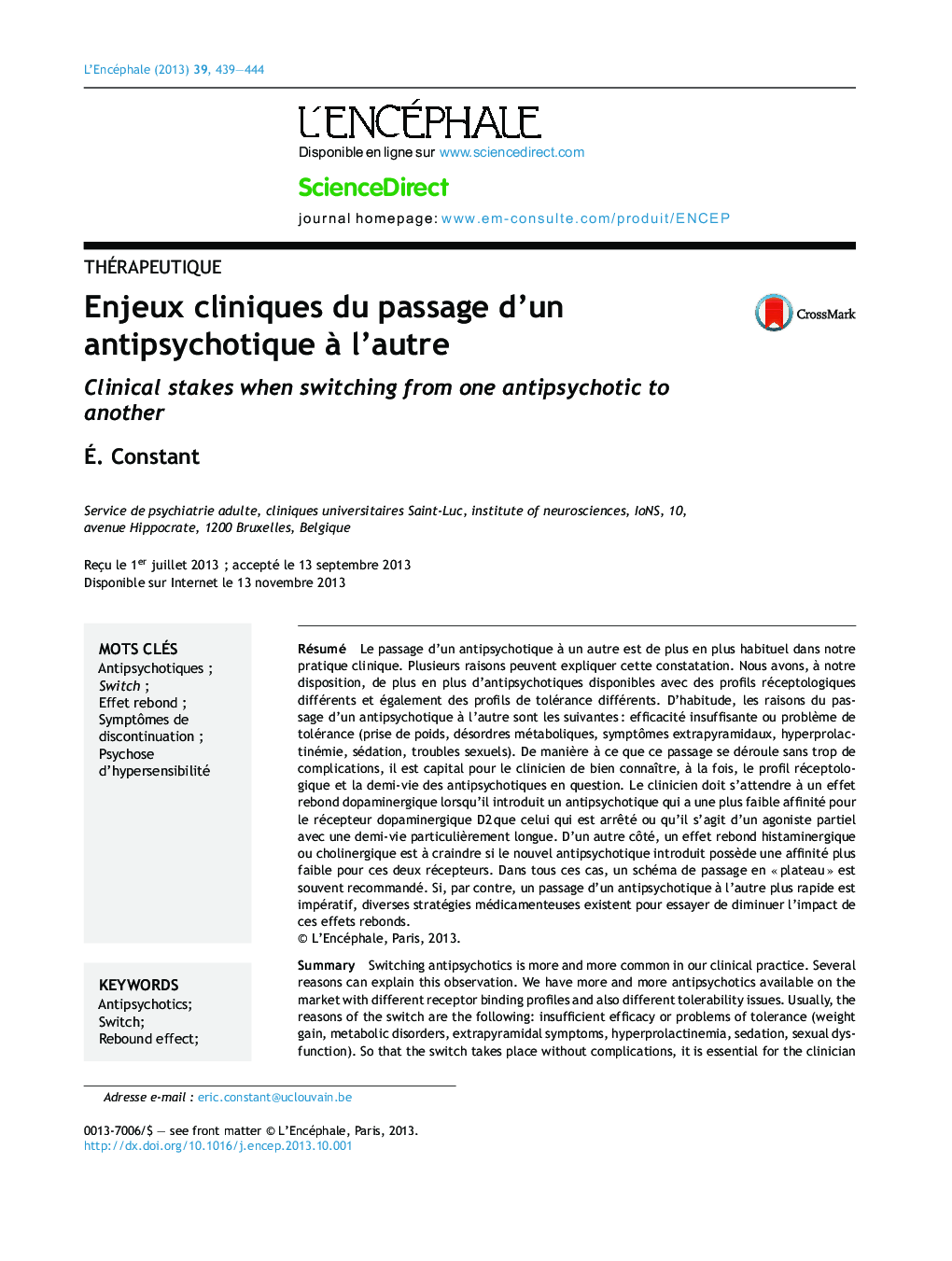| Article ID | Journal | Published Year | Pages | File Type |
|---|---|---|---|---|
| 4181929 | L'Encéphale | 2013 | 6 Pages |
Abstract
Switching antipsychotics is more and more common in our clinical practice. Several reasons can explain this observation. We have more and more antipsychotics available on the market with different receptor binding profiles and also different tolerability issues. Usually, the reasons of the switch are the following: insufficient efficacy or problems of tolerance (weight gain, metabolic disorders, extrapyramidal symptoms, hyperprolactinemia, sedation, sexual dysfunction). So that the switch takes place without complications, it is essential for the clinician to have full knowledge of both the receptor binding profiles of the antipsychotics in question and their half-life. The clinician has to expect a dopaminergic rebound when the introduced antipsychotic has a lesser affinity for the dopaminergic D2 receptor than that which is withdrawn or if it is a partial agonist with a particularly long half-life. On the other hand, a histaminergic or cholinergic rebound can be expected if the new antipsychotic has a lesser affinity for these two receptors. In all these scenarios, a “plateau” switch will often be recommended. Now, if a faster switch is imperative, various medication strategies exist to try to decrease the impact of the rebound effects.
Related Topics
Health Sciences
Medicine and Dentistry
Psychiatry and Mental Health
Authors
Ã. Constant,
